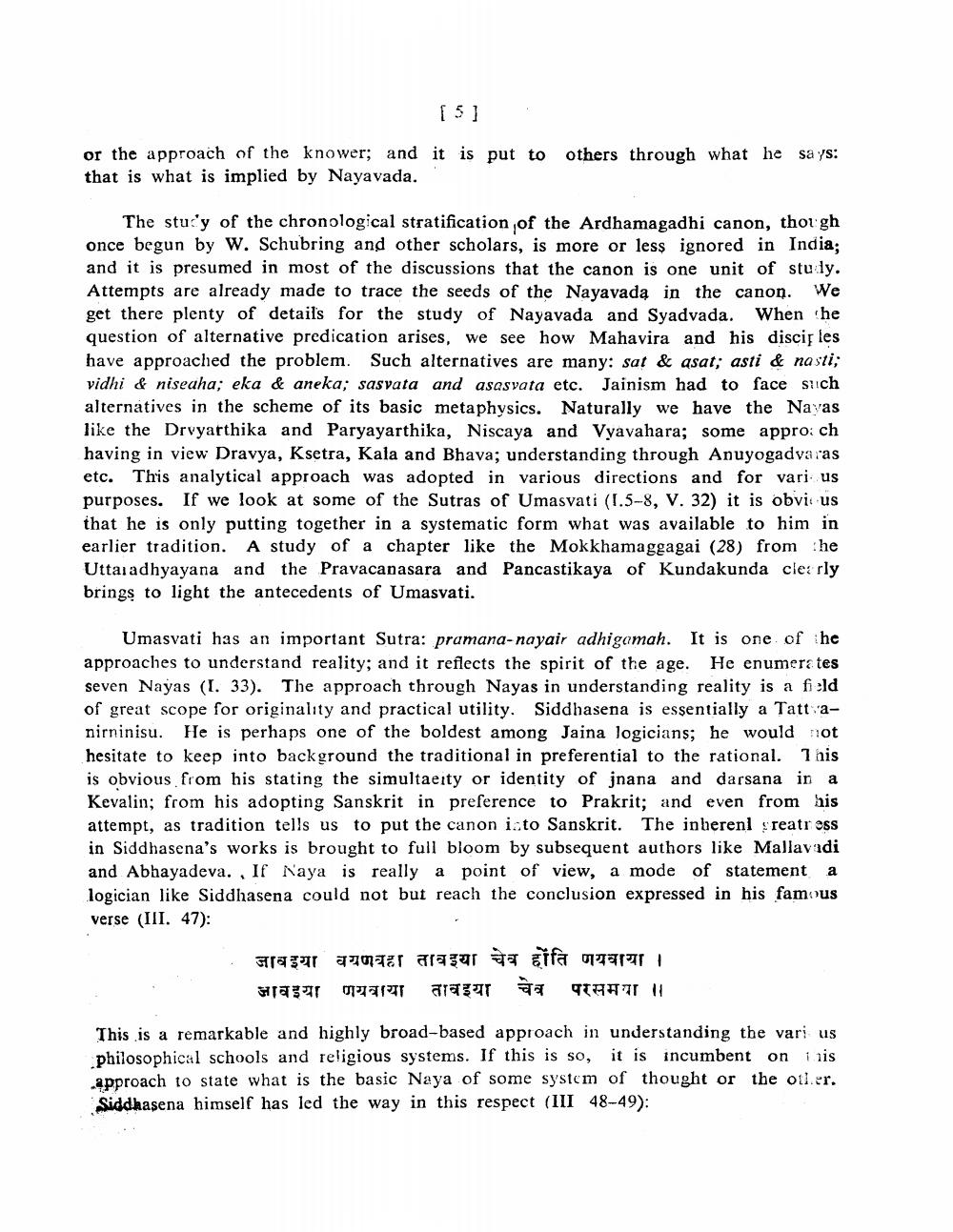________________
[5]
or the approach of the knower; and it is put to others through what he says: that is what is implied by Nayavada.
The study of the chronological stratification of the Ardhamagadhi canon, though once begun by W. Schubring and other scholars, is more or less ignored in India; and it is presumed in most of the discussions that the canon is one unit of stu ly. Attempts are already made to trace the seeds of the Nayavada in the canon. We get there plenty of details for the study of Nayavada and Syadvada. When he question of alternative predication arises, we see how Mahavira and his disciples have approached the problem. Such alternatives are many: sat & asat; asti & nasti; vidhi & niseaha; eka & aneka; sasvata and asasvata etc. Jainism had to face sich alternatives in the scheme of its basic metaphysics. Naturally we have the Navas like the Drvyarthika and Paryayarthika, Niscaya and Vyavahara; some appro: ch having in view Dravya, Ksetra, Kala and Bhava; understanding through Anuyogadvaras etc. This analytical approach was adopted in various directions and for varius purposes. If we look at some of the Sutras of Umasvati (1.5-8, V. 32) it is obvious that he is only putting together in a systematic form what was available to him in earlier tradition. A study of a chapter like the Mokkhamaggagai (28) from the Uttaiadhyayana and the Pravacanasara and Pancastikaya of Kundakunda clearly brings to light the antecedents of Umasvati.
Umasvati has an important Sutra: pramana-nayair adhigamah. It is one of he approaches to understand reality; and it reflects the spirit of the age. He enumerates seven Nayas (I. 33). The approach through Nayas in understanding reality is a field of great scope for originality and practical utility. Siddhasena is essentially a Tatt anirninisu. He is perhaps one of the boldest among Jaina logicians; he would not hesitate to keep into background the traditional in preferential to the rational. This is obvious from his stating the simultaeity or identity of jnana and darsana in a Kevalin; from his adopting Sanskrit in preference to Prakrit; and even from his attempt, as tradition tells us to put the canon isto Sanskrit. The inherenl șreatress in Siddhasena's works is brought to full bloom by subsequent authors like Mallavadi and Abhayadeva. , If Naya is really a point of view, a mode of statement a logician like Siddhasena could not but reach the conclusion expressed in his famous verse (III. 47):
. जावइया वयणवहा तावइया चेव होंति णयवाया ।
आवइया णयवाया तावइया चेव परसमया ॥
This is a remarkable and highly broad-based approach in understanding the vari us philosophical schools and religious systems. If this is so, it is incumbent on is approach to state what is the basic Naya of some system of thought or the other. Siddhasena himself has led the way in this respect (III 48-49):




